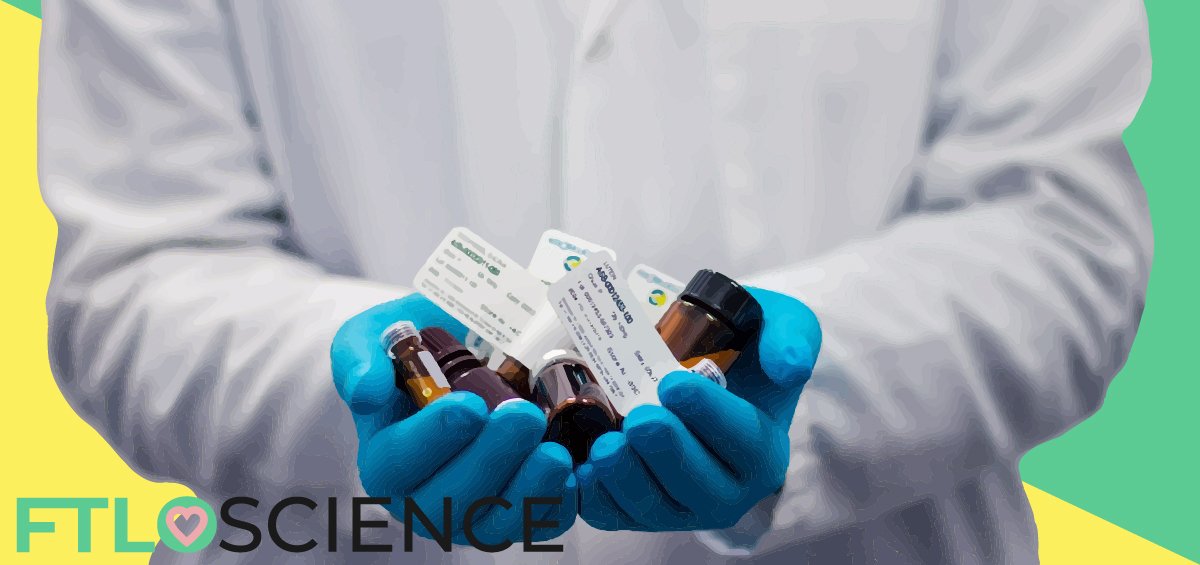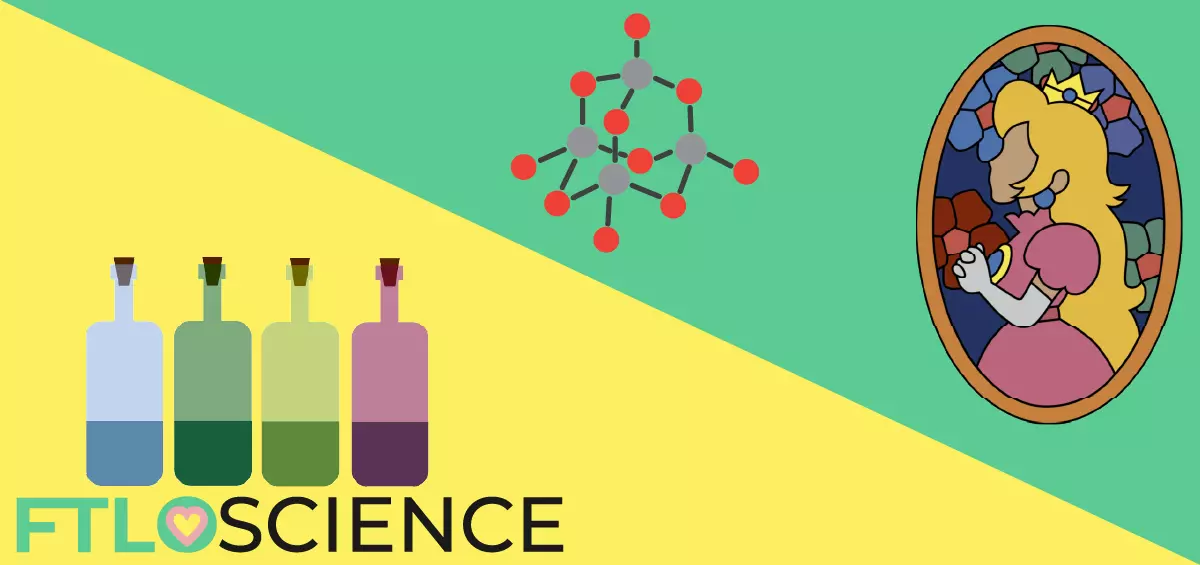Medicinal chemistry lays the foundation for the drug discovery process. A strong lead compound increases the chances of a pharmaceutical company developing a strong drug candidate, with better chances of success later on. Once a lead compound or ‘hit’ has been identified, modification and optimization are the next steps. Improving its safety and efficacy profiles through rational drug design can strengthen its position as a drug candidate, improving its chances of it making it to market as a drug.
Once a lead compound is chosen, it is modified to improve upon certain parameters (half-life, potency, toxicity, etc.). If lead modification and optimization is successful, the lead compound becomes a drug candidate, ready for clinical trials.
The Lead Compound
Choosing a Lead Compound
After identifying a biological target to treat a certain disease, several ‘hits’ are discovered through high throughput screening. If a hit passes the first set of hoops against the target, it is further evaluated for its suitability as a drug. This process is called lead identification.
The successful hit compound can now be considered a lead compound, which makes medicinal chemists sit up and take notice. However, lead compounds must be improved upon before they can be deemed fit for the next stage of drug development.
With a little bit of luck and a lot of modification and optimization, a lead compound will become a drug candidate and progress to clinical trials.
Identifying the Pharmacophore…
Before we make any modifications to our lead compound, it is important to first identify the ‘active’ part of the molecule—the site that directly interacts with the biological target. This site is known as the pharmacophore; identifying it is key to drug discovery and development.
The pharmacophore of morphine, for example, is a tertiary alkylamine that’s at least four units away from an aromatic ring1. This structure allows the molecule to interact with opioid receptors in the body, activating a signaling cascade that results in analgesia and sedation.
…and the Auxophore
Conversely, the other sites on the lead compound are collectively known as the auxophore. Changing these sites can increase or decrease the effectiveness of the compound, revealing information about structure and binding to the target.
It is common for medicinal chemists to synthesize a range of different compounds that are close analogs of the lead compound, as there is a good chance they might exhibit better activity. Again, morphine is an excellent example.
Experimenting with different auxophores of the original molecule has resulted in a whole range of derivatives, some many more times more potent than morphine itself.


Lead Modification
Structure-Activity Relationships of the Lead Compound
The chemical structure of a molecule determines how it will behave inside the body. Hence, an understanding of the relationship structure and activity can uncover ways to improve the activity of the lead compound. Structure-Activity Relationships (SAR) are the cornerstone of rational drug design.
However, it can be difficult to predict how modifying a compound’s electronic and steric properties might affect its activity, the process is largely trial and error. A early understanding of the molecule’s pharmacodynamics (how the drug affects the body) can also be useful at this stage.
This is why ‘me-too’ drugs are so successful, because there is data available on how the compound is likely to behave. Either way, a rational and systematic approach also gives us the best possible chance to uncover structure-activity relationships in the shortest amount of time.
Modifying Charge/Electronic Properties
The structure of a molecule determines how its electrons are arranged, with areas differing in electron density. It is this arrangement of these electrons in a molecule that affects its interactions with our biological target; this ‘map’ of electron density is what the biological target ‘sees’. In fact, all molecular interactions are the result of electron behavior!
Fluorine is a popular element in medicinal chemistry due to its high electronegativity value (the highest of all elements!), making it good at drawing electron density onto itself. This allows it to modulate charge properties and also add conformational restraint to the rest of the compound. It’s also a rather small element, hence it frequently replaces hydrogen by substitution onto benzene rings.

Due to the limited scope of medicinal chemistry reactions, aromatic ring systems are extremely common in drugs. Substituting a ring system with electron-withdrawing or electron-donating groups changes the electronics of the ring.
Tests can be conducted to decipher a pattern of increasing or decreasing potency with groups of varying electronegativities. It is important to keep the sizes of the groups similar to avoid modifying the size of a compound.
Modifying Size/Steric Properties
Size matters! Apart from the electric charge of the molecule, its overall size affects how well it can fit and interact with the binding cavity of the target. The size-activity relationship can be probed using groups of varying steric bulk.
As a simple example, if exchanging a methyl group with a tertiary butyl group decreases the potency of a compound, it might suggest that the increased size interferes with a binding pocket of the target molecule.
Sometimes, studying how the size of a molecule affects its activity can uncover new binding pockets on the target that can be used to enhance the potency and efficacy. Just as with modifying the electronics of a compound, it is important to separate any charge interactions when assaying for size-activity relationships.
Lead Optimization
After modifying the lead compound, the next step is to study the pharmacodynamics (how the drug can affect the body) and pharmacokinetics (how the body might affect the drug). Although there is no foolproof way to predict these properties (hence the need for clinical trials!), we must still attempt to make educated guesses based on the data.
Selectivity and Toxicity
The goal of a drug is to cause beneficial changes to a physiological process in the body. In an ideal world, the drug molecule does this by exerting its effects solely on its specific target. However, this is definitely not the case; the human body consists of some 37 trillion individual cells!
It is very common for related, unrelated and sometimes unexpected targets to be affected. This is why many drugs initially designed for one target end up being used for another in what’s known as drug repositioning.
Many interactions with unrelated targets go undetected until late on in human clinical trials, which is definitely not ideal. New adverse reactions can derail the drug development process. To prevent this, we need to gather as much information as we can on the lead compound’s selectivity and potential toxicity inside the body.
A compound that targets a specific receptor often activates their related family members as well, usually producing similar effects as the primary target. One such family is the cytochrome P450 group of enzymes, responsible for the metabolism of a wide range of drugs.
Drugs that inhibit one are likely to inhibit other members of the family, potentially leading to drug-drug interactions. Although related off-targets are studied intensely to understand and reduce undesirable activity, it can be unfeasible to assay the effects of the compound on the entire library of physiological targets.
ADME Profile of Lead Compound
ADME stands for Absorption, Distribution, Metabolism and Elimination, properties that are strongly influenced by the chemical structure of a drug. Administration of a drug leads to its introduction into the bloodstream, followed by distribution throughout the body. The drug is slowly metabolized, after which it is excreted.
ADME studies are conducted to build up the pharmacokinetic profile of a drug, such as its stability and overall ‘drug-like’ character in a physiological environment.

Absorption
In order for the drug to have an effect, it needs to be administered and absorbed into the body such that it reaches the target site. The amount of drug that actually reaches this site is influenced by factors such as its permeability through the intestinal walls, solubility in blood as well as the overall stability of the molecule.
The chemical structure of the lead compound can be modified to fine-tune these parameters. Increasing hydrocarbon chain lengths improves the drug’s lipid permeability, while polar groups and hydrogen bond acceptors (-CN, =O) increase solubility in water.
Normally, the effects of a drug are apparent and effective above a certain concentration. Improving absorption efficiency means a smaller amount of drug has to be administered to produce the same effect. Generally, administering smaller doses is beneficial as:
- The use of lesser active ingredients means less cost
- It improves convenience (smaller pills, fewer doses)
- It decreases the risk of side effects
- Higher potency leaves more room for optimizing other parameters
Distribution
For orally active drugs, distribution begins once it is absorbed by the intestines and enters the bloodstream. A drug’s solubility can affect its distribution, so it is important to take it into account during formulation and dosing studies. Drugs with higher potency (IC50) values require a lower aqueous solubility to achieve the desired concentration in the bloodstream.
Sometimes, a prodrug approach to drug design improves distribution. A prodrug is a pharmacologically inactive form of the compound that is then converted into the active drug inside the body. Using a soluble prodrug that is metabolized into a less soluble drug inside the bloodstream is a viable strategy for overcoming poor absorption and distribution.
A drug’s ability to permeate into cell membranes is another factor to consider. Oxygen, nitrogen and hydrogen atoms tend to increase the polarity of a molecule, increasing its polar surface area (PSA). This value can be calculated for an entire molecule based on its chemical structure, measured in angstroms squared (Ų).
Molecules with a PSA less than 140 Ų are generally needed to cross the lipid bilayer of cell membranes, while a PSA of less than 70 Ų is required to cross the blood-brain barrier, as it has other protective mechanisms that limit the compounds that pass through.
Metabolism
Drugs don’t stay active in the body for long though, they are metabolized by the body to yield inactive products. After all, it wouldn’t be wise to design a drug that remains active in the body forever! The stability of the drug is determined by its interactions with the physiological environment, such as in blood and plasma. The pH of the drug’s environment also affects its stability; physiological pH changes as the drug moves from the stomach (pH 1.0 to 2.5) into the small intestine (pH 6.6 to 7.5)2.
However, the liver is the primary site for the metabolism of many drugs, being host to the cytochrome P450 and transferase enzyme ‘families’. Cytochrome P450 (CYP450) enzymes work to promote reactions that actually increase the reactivity of a compound, such as the insertion of polar hydroxyl (-OH) groups. A widely used drug design strategy to increase a drug’s stability is to replace hydrogen atoms (usually at the -para position on a ring) with fluorine, making it more resistant to CYP450 metabolism3.

Polar compounds tend to be more readily excreted via bile or urine. Hence, transferases work together with CYP450 enzymes to ‘attach’ charged species onto the molecule. This process is made easier by prior insertion of the reactive groups by the cytochrome family of enzymes.
It is important to study the metabolism of active drug compounds, as their metabolites may not be totally inert. It is common for metabolites to be more potent and even more toxic than the parent compound. However, this can be used to our advantage in some cases. The anticancer agent Tamoxifen, for example, is a prodrug that is activated only after CYP450-mediated insertions, converting it into a range of active metabolites4.
Elimination
Finally, the inactive products are removed from the body through excretion and elimination. The rate of elimination depends on the water solubility of the compounds, as one of the main routes of excretion is by urine through the kidneys. Hence, overall kidney function is a key factor; an older person will generally have a slower rate of elimination compared to a younger person.
The other elimination route is through bile, a yellow fluid that is secreted by the liver. Metabolites that don’t get absorbed back into the bloodstream can be removed by bile, which is passed into the intestines and excreted in feces.
Next Steps: Preclinical and Clinical Trials
Finally, your lead compound has gone through the entire drug design process: discovery, identification, modification and optimization. It is ready to be presented as the drug candidate for the next stage: drug development. Everything has been done to ensure the drug candidate stands the best chance of enduring the rigors of clinical trials.
Now all that’s left to do is hope for the best. If the drug proves to be safe, effective and better than its competitors, it might even prove to be the next Lipitor, a blockbuster success!
As for you, the medicinal chemist, it’s back to step one of the drug discovery process: identifying hits!
Reference
- Foye, W. O. (2008). Foye’s Principles of Medicinal Chemistry. Lippincott Williams & Wilkins.
- Evans, D. F., Pye, G., Bramley, R., Clark, A. G., Dyson, T. J., & Hardcastle, J. D. (1988). Measurement of gastrointestinal pH profiles in normal ambulant human subjects. Gut, 29(8), 1035-1041.
- Obach, R. S., Walker, G. S., & Brodney, M. A. (2016). Biosynthesis of fluorinated analogs of drugs using human cytochrome P450 enzymes followed by deoxyfluorination and quantitative nuclear magnetic resonance spectroscopy to improve metabolic stability. Drug Metabolism and Disposition, 44(5), 634-646.
- Kebamo, S., Tesema, S., & Geleta, B. (2015). The role of biotransformation in drug discovery and development. J Drug Metab Toxicol, 6(196), 2.
About the Author

Sean is a consultant for clients in the pharmaceutical industry and is an associate lecturer at La Trobe University, where unfortunate undergrads are subject to his ramblings on chemistry and pharmacology.




